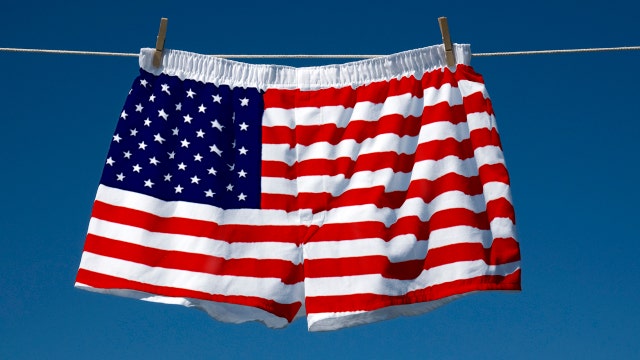Are you allergic to your underwear?
Allergist Timothy Mainardi talks about very real allergies to unique things like water and even your underwear
We all probably know someone who is allergic to pollen or dust, but what about cold weather or even underwear? Indeed, various unusual allergies exist, and some of them can be dangerous. Allergist Tim Mainardi, of Hudson Allergy in New York City, sat down with FoxNews.com to discuss some of these allergens, as well as their effects and how to treat them.
Cold weather: Dr. Mainardi said this allergy is fairly common. It’s a type of physical urticaria, which is a fancy word for hives. Hives are caused by the release of histamines, which is why people generally take an antihistamine when they break out. Usually histamine is released by a protein from, for example, a tree or a peanut. But, in the case of cold weather, histamine is released without one. Dr. Mainardi said hands are typically the body part that’s most vulnerable to this allergen. “Holding onto cold drinks, you develop hives where the cold has touched them.” To treat a cold-weather allergy, Mainardi recommended taking an antihistamine.
Exercise: An allergy to exercise can be dangerous and scary, Dr. Mainardi said. It usually affects people ages 15 to 45. During exercise, a person can feel warmth then break out in hives. The reaction can become systemic, and the person can then develop true anaphylaxis. The attack usually is associated with consumption of certain foods. Decades ago, eating shellfish and exercising shortly after commonly triggered the reaction, but now it’s more common to see anaphylaxis with consumption of wheat. “Anybody who has this has to be very careful about any type of strenuous activity,” Mainardi said.
If you suffer from an allergy to exercise, see an allergist who can help prescribe medication and a treatment plan so you can continue to work out.
Underwear: An allergy to underwear is a contact dermatitis, or an itchy rash. People can be allergic to fabrics, dyes, chemicals and preservatives in clothes— like latex, which is commonly found in the waistbands of underwear. The best way to combat this allergy is to find organic replacements. For instance, latex-free clothes that use lycra are usually hypoallergenic. As far as the fabric itself, Dr. Mainardi said some companies make organic clothing and that “natural fibers like cotton are the best.”
Water: This is allergy affects 1 in 250 million people, making it very rare, Dr. Mainardi said. Scientists don’t know the exact cause of water allergies, but affected individuals develop very painful hives when they come in contact with water. What’s strange about this allergy is it is specific to water and not every liquid. For example, people with the allergy don’t see negative reactions to oil or alcohol. Some people “actually have difficulty drinking liquids themselves and have to work around [it]. There are people who can only drink milk, there are people who can only drink tea,” Dr. Mainardi said.
If you believe you have an allergy, consult a doctor before taking any treatment.

